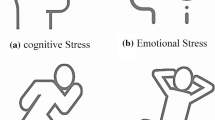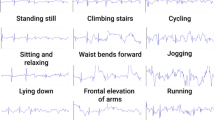Abstract
Heart disease patients are continuously increasing. The patients face the problem of a delayed diagnosis as the subjects do not undergo routine tests and consult a doctor only after severe symptoms. Most medical expert systems are designed to aid the doctors in making wise decisions and only such data sets exist in the literature. We attack the problem of an early-stage diagnosis that can be done at the home by the subject himself on a routine basis, using a low cost and compact ECG sensor. Machine learning tools nowadays have become important for data processing and assistance in various fields including medicine. Attributed to an absence of data, we first developed our ECG dataset by collecting ECG signal data from 300 persons including 53 cardiac patients and 247 healthy persons, using a low-cost and compact ECG sensor. To detect the heart diseases from this data, classical methods (Random forest and Gradient boosting) and state of the art Deep Learning models (1D Convolution Neural Net) were used. A problem with machine learning in the specific context is a severe data imbalance, for which oversampling of minority data was used. Since the sensor is a low cost, noise can get added up. Hence, voting across multiple time windows is done to improve the results. After a healthy comparison between all classification methods with different techniques based on their test accuracy, 1D CNN with oversampling and using voting strategy comes out as the best classifiers with a 93% test accuracy.








Similar content being viewed by others
References
Achary UR, Oh SL, Hagiwara Y, Tan JH, Adam M, Gertych A, Tan RS (2017) A deep convolutional neural network model to classify heartbeats. Comput Biol Med 89:389–396
Ayar M, Sabamoniri S (2018) An ECG-based feature selection and heartbeat classification model using a hybrid heuristic algorithm. ELSEVIER Informatics in Medicine Unlocked 13:167–175
Batista G, Bazzan B, Monard M (2003a) Balancing training data for automated annotation of keywords: a case study. In WOB, pp 10–18
Batista GEAPA, Bazzan ALC, Monard MC (2003b) Balancing training data for automated annotation of keywords: a case study. WOB, pages 10–18, 2003
Batista G, Prati RC, Monard MC (2004) A study of the behavior of several methods for balancing machine learning training data. ACM Sigkdd Explor Newsl 6(1):20–29
Chawla V, Hall LO, Bowyer KW, Kegelmeyer WP (2002) SMOTE: synthetic minority oversampling technique. J Artif Intell Res 16:321–357
da S Luz EJ, Schwartz WR, Cámara-Chávez G, Menotti D (2016) ECG-based heartbeat classification for arrhythmiadetection: A survey. In: ELSEVIER: Computer methods and programs in Biomedicine 127:144–164
de Lannoy G, Francois D, Delbeke J, Verleysen M (2012) Weighted conditional random fields for supervised interpatient heartbeat classification. IEEE Trans Biomed Eng 59(1):241–247
Dixit S, Kala R (2020) ECG Dataset, Available at: https://drive.google.com/drive/folders/13AyIomH2z1VwXclFgayl3wnsmMVJqKNa?usp=sharing. Accessed 30 Dec 2020
Fukushima K (1980) Neocognitron: a self-organizing neural network model for a mechanism of pattern recognition unaffected by shift in position. Biol Cybern 36(4):193–202
Goldberger AL, Amaral LAN, Glass L, Hausdorff JM, Ivanov PC, Mark RG, Mietus JE, Moody GB, Peng C-K, Stanley HE (2001) PhysioNet: components of a new research resource for complex physiologic signals. Circulation 101(23):e215–e220
Goodfellow I, Bengio Y, Courville A (2016) Deep learning. MIT Press
Haibo YB, Garcia EA, Li S (2008) ADASYN: adaptive synthetic sampling approach for imbalanced learning. In: Proceedings of the IEEE International Joint Conference on Neural Networks, pp 1322–1328
Han H, Wen-Yuan W, Bing-Huan M (2005) Borderline-SMOTE: a new over-sampling method in imbalanced data sets learning. In: Proceedings of the Advances in Intelligent Computing. Lecture Notes in Computer Science, vol 3644, Springer, Berlin, Heidelberg, pp 878–887
Hart E (1968) The condensed nearest neighbor rule. IEEE Trans Inf Theory IT-14:515–516
He H, Bai Y, Garcia EA, Li S (2008) ADASYN: adaptive synthetic sampling approach for imbalanced learning. In: Proceedings of the 2008 IEEE International Joint Conference on Neural Networks, Hong Kong, 2008, pp 1322–1328
Hubel DH, Wiesel TN (1968) Receptive fields and functional architecture of monkey striate cortex. J Physiol 195(1):215–243
Kiranyaz S, Ince T, Gabbouj M (2016) Real-time patient-specific ECG classification by 1-D convolutional neural networks. IEEE Trans Biomed Eng 63(3):664–675
Kotsiantis S, Pintelas P (2003) Mixture of expert agents for handling imbalanced data sets. Annals Math Comput Teleinform 1:46–55
Kotsiantis DK, Pintelas P (2006) Handling imbalanced datasets: a review. GESTS Int Trans Comput Sci Eng 30(1):25–36
Kubat M, Matwin S (1997) Addressing the curse of imbalanced training sets: one sided selection. In: Proceedings of the Fourteenth International Conference on Machine Learning, Nashville, Tennesse, Morgan Kaufmann, pp 179–186
Mondéjar-Guerraa V, Novo J, Rouco J, Penedo MG, Ortega M (2018) Heartbeat classification fusing temporal and morphologicalinformation of ECGs via ensemble of classifiers. Biomed Signal Process Control 41:41–48
Moody GB, Mark RG (2001) The impact of the MIT-BIH arrhythmia database. IEEE Eng Med Biol Mag 20(3):45–50
Patil P, Kumar KS, Gaud N, Semwal VB (2019) Clinical human gait classification: extreme learning machine approach. In: 2019 1st international conference on advances in science, engineering and robotics technology. IEEE, pp 1–6
Rajesh KNVPS, Dhuli R (2018) Classification of imbalanced ECG beats using re-sampling techniques and AdaBoost ensemble classifier. Biomed Signal Process Control 41:242–254
Sannino G, De Pietro G (2018) A deep learning approach for ECG-based heartbeat classification for arrhythmia detection. ELSEVIER Future Generation Computer Systems 86:446–455
Semwal VB, Mondal K, Nandi GC (2017) Robust and accurate feature selection for humanoid push recovery and classification: deep learning approach. Neural Comput & Applic 28(3):565–574
Visa S, Ralescu A (2005) Issues in mining imbalanced data sets-a review paper. In: Proceedings of the sixteen midwest artificial intelligence and cognitive science conference, MAICS, pp 67–73
Xinjian G, Yilong Y, Cailing D, Gongping Y, Guangtong Z (2008) On the class imbalance problem. In: Proceedings of the 2008 Fourth International Conference on Natural Computation 04:192–201
Yildirim O (2018) A novel wavelet sequence based on deep bidirectional LSTM network model for ECG signal classification. Comput Biol Med 96:189–202
Yildirim O, Pławiak P, Tan RS, Acharya UR (2018) Arrhythmia detection using deep convolutional neural network with long duration ECG signals. Comput Biol Med 102:411–420
Zhai X, Tin C (2018) Automated ECG Classification Using Dual Heartbeat Coupling Based on Convolutional Neural Network. In: IEEE Access 6:27465–27472
Acknowledgements
The work is funded by the ASEAN-India Collaborative Research Project, AISTDF Secretariat with grant number IMRC/AISTDF/R&D/P-6/2017 and the Indian Institute of Information Technology (IIIT), Allahabad. The authors also wish to thank Dr. Piyush Saxena (M.D.) in specific and the entire administration and team of the Department of Cardiology, Swaroop Rani Nehru Hospital-Allahabad for their help in recording the data. The authors wish to thank Dr. Sonali Agarwal for constant help throughout the project. The authors also wish to thank Hemantharaj M, Tanuj Pal Singh, and Dharmendra Prajapat, who helped in the data collection.
Author information
Authors and Affiliations
Corresponding author
Additional information
Publisher’s note
Springer Nature remains neutral with regard to jurisdictional claims in published maps and institutional affiliations.
Rights and permissions
About this article
Cite this article
Dixit, ., Kala, R. Early detection of heart diseases using a low-cost compact ECG sensor. Multimed Tools Appl 80, 32615–32637 (2021). https://doi.org/10.1007/s11042-021-11083-9
Received:
Revised:
Accepted:
Published:
Issue Date:
DOI: https://doi.org/10.1007/s11042-021-11083-9




